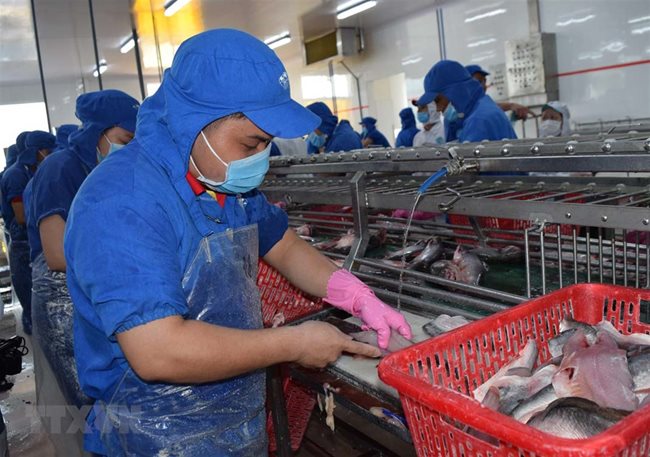|
have been subjected to a tariff of 15%, in line with the Finance Ministry’s Circular 96, according to a complaint by the Vietnam Association of Seafood Exporters and Producers (VASEP).
To give a boost to the seafood industry, help firms reduce production costs and enhance the competitiveness in the international market, the Ministry of Agriculture and Rural Development wrote to the Ministry of Finance on July 2 asking it to handle the VASEP’s complaint and remove these bottlenecks, VietnamPlus news site reported. Currently, the firms are processing fresh seafood into cooked products and seafood material mixed with spices into value-added products. However, while inspecting the seafood processing firms, the tax agencies identified their products as semi-processed ones rather than processed seafood products, and therefore, they are not subject to tax incentives. As such, the firms had to pay duties of 20% on their products for export and domestic consumption, instead of 15% for processed items. The VASEP noted that the finance authorities’ guidelines do not include the definition of processed and semi-processed products. At the same time, tax agencies impose taxes on processed and semi-processed products based on tax regulations. Specifically, Clause 1 of Article 1 in Circular 26 of the Ministry of Finance regulates that unprocessed or semi-processed products comprise those which are cleaned, dried, cut, sliced, peeled, husked, packaged and preserved in cold storage facilities. Clause 3 of Article 4 of the ministry’s Circular 83 also stipulates that the rest are identified as processed products. Given the articles and circulars, many firms stated that the regulations on taxes do not match the growth of the seafood processing industry, the Law on Food Safety and the prime minister’s Decision 27. As such, food processed via the freezing method is not regarded as a processed product. Besides this, the 2010 Law on Food Safety regulates that processing food is the process of turning semi-processed products or fresh materials into food products. The bottlenecks have caused severe losses for seafood processors and hindered them from further developing, according to the VASEP. The association proposed identifying products, which are processed from frozen seafood, fresh seafood and materials mixed with spices as processed ones. SGT |
||
